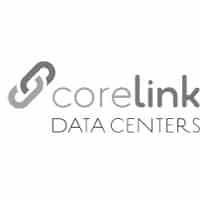 Whether you operate a data center or any other business, business continuity is incredibly important. We all think we are immune to disaster but the reality is, if you have not formed a business continuity plan for disasters, you are leaving your data center at severe risk. Imagine what it would be like if a disaster struck (flood, fire, etc.) and you could not get into your data center for a few hours – problematic, right? What if that disaster was really bad and you could not get into your data center for a few days or weeks – huge problem. Business cannot come to a screaming halt so a strategy for maintaining business continuity is a must. A strategically formed, well-thought-through business continuity plan should be a part of any data center’s disaster recovery program. A disaster recovery plan will be the big umbrella under which we will talk about business continuity because the two are inextricably related. This is because disaster recovery focuses heavily on data recovery and management but, beyond maintaining and protecting data in the event of a disaster, a data center business and the businesses it serves must be able to continue to meet its most basic objectives. During a disaster a data center may experience downtime in which all business operations come to a halt. This is not a small problem – downtime may cost as much as $7,900 per minute. A disaster recovery plan, along with a business continuity plan, will help a data center reduce downtime in the event of a disaster as well as operate continuously to meet business objectives.
Whether you operate a data center or any other business, business continuity is incredibly important. We all think we are immune to disaster but the reality is, if you have not formed a business continuity plan for disasters, you are leaving your data center at severe risk. Imagine what it would be like if a disaster struck (flood, fire, etc.) and you could not get into your data center for a few hours – problematic, right? What if that disaster was really bad and you could not get into your data center for a few days or weeks – huge problem. Business cannot come to a screaming halt so a strategy for maintaining business continuity is a must. A strategically formed, well-thought-through business continuity plan should be a part of any data center’s disaster recovery program. A disaster recovery plan will be the big umbrella under which we will talk about business continuity because the two are inextricably related. This is because disaster recovery focuses heavily on data recovery and management but, beyond maintaining and protecting data in the event of a disaster, a data center business and the businesses it serves must be able to continue to meet its most basic objectives. During a disaster a data center may experience downtime in which all business operations come to a halt. This is not a small problem – downtime may cost as much as $7,900 per minute. A disaster recovery plan, along with a business continuity plan, will help a data center reduce downtime in the event of a disaster as well as operate continuously to meet business objectives.
To formulate a business continuity plan we must first outline what makes a successful business continuity plan. A data center’s business continuity plan will function as a roadmap. If a disaster strikes, you will hopefully be able to find the type of disaster in your business continuity plan and then begin following the “map” to get to the solution and restore your data center to business as usual. First and foremost, a proper business continuity plan will focus on what can be done to prevent disasters so that business continuity is never interrupted in the first place. Data centers must consider what their unique needs are because there is no such thing as a generic data center business continuity plan – it would never work. Data centers must identify and asses all mission critical assets and risks. Once they have been identified it will be far easier to formulate a business continuity plan with specific goals in mind. You can prioritize your most problematic risks by focusing on the risk they pose to mission critical assets. In considering individual needs it is imperative that data centers determine what applications and processes are mission critical. For example, you’re your mission critical systems be maintained remotely? Additionally, in today’s data center world where security is a top concern, maintaining data security should be an important part of your business continuity plan.
Disaster prevention is a central part of your data center’s business continuity plan. Identifying business continuity goals and potential problem areas will help you lay out a proper disaster prevention plan. Depending on your unique data center, certain measures may be beneficial such as increased inspections of infrastructure, better surveillance, enhanced security in various areas including data centers grounds security and rack-based security, increased redundancy, and more. Think in terms of real problems and real consequences; be specific so that you can make specific business continuity plans and strategies.
Some data centers may want to relocate their data center if a disaster is incredibly large but the logistics of this are far from simple. Relocating for a disaster safely, rapidly, and securely is no simple task. And, beyond that, it is expensive which is why many data centers – even large enterprise data centers – do not do this. To do this properly as part of a business continuity plan, a detailed data center migration plan must accompany the business continuity plan. Some enterprises may want to utilize regionally diverse data centers that mirror each other but this is also expensive and exceptionally complex to implement – though it can be very effective at maintaining uptime, maximizing security, and optimizing business continuity.
As mentioned, redundancy is an important part of maximizing uptime and maintaining business continuity in a data center. As part of your data center’s business continuity plan, you may want to implement load balancing and link load balancing. Server load balancing and link load balancing are two strategies that may be used to help prevent the loss of data from an overload or outage in a data center. Continuity Central Archive explains how these two strategies can be used in data centers, “Server load balancing ensures application availability, facilitates tighter application integration, and intelligently and adaptively load balances user traffic based on a suite of application metrics and health checks. It also load balances IPS/IDS devices and composite IP-based applications, and distributes HTTP(S) traffic based on headers and SSL certificate fields. The primary function of server load balancing is to provide availability for applications running within traditional data centers, public cloud infrastructure or a private cloud. Should a server or other networking device become over-utilized or cease to function properly, the server load balancer redistributes traffic to healthy systems based on IT-defined parameters to ensure a seamless experience for end users…Link load balancing addresses WAN reliability by directing traffic to the best performing links. Should one link become inaccessible due to a bottleneck or outage, the ADC takes that link out of service, automatically directing traffic to other functioning links. Where server load balancing provides availability and business continuity for applications and infrastructure running within the data center, link load balancing ensures uninterrupted connectivity from the data center to the Internet and telecommunications networks. Link load balancing may be used to send traffic over whichever link or links prove to be most cost-effective for a given time period. What’s more, link load balancing may be used to direct select user groups and applications to specific links to ensure bandwidth and availability for business critical functions.”
 Data centers are also utilizing the cloud for their business continuity plans because it is cost-efficient and highly effective. The cloud platform is exceptionally effective for business continuity, particularly as data centers move more and more towards virtualization. A cloud service with proper SLA (service level agreement) can ensure that data will be continuously saved and protected even in the event of a disaster. This is where identifying mission critical applications and information are important. The entirety of the data center’s workload does not need to be recovered in an instant, only that which has been determined mission critical.
Data centers are also utilizing the cloud for their business continuity plans because it is cost-efficient and highly effective. The cloud platform is exceptionally effective for business continuity, particularly as data centers move more and more towards virtualization. A cloud service with proper SLA (service level agreement) can ensure that data will be continuously saved and protected even in the event of a disaster. This is where identifying mission critical applications and information are important. The entirety of the data center’s workload does not need to be recovered in an instant, only that which has been determined mission critical.
In addition to the cloud, many data centers opt to implement image-based backup for continuity. Data Center Knowledge provides a helpful description of what image-based backup is and how it can be used uniquely in data centers, “Hybrid, image-based backup is at the core of successful business continuity solutions today. A hybrid solution combines the quick restoration benefits of local backup with the off-site, economic advantages of a cloud resource. Data is first copied and stored on a local device, so that enterprises can do fast and easy restores from that device. At the same time, the data is replicated in the cloud, creating off-site copies that don’t have to be moved physically. Channel partners are also helping enterprises make a critical shift from file-based backup to image-based. With file-based backup, the IT team chooses which files to back up, and only those files are saved. If the team overlooks an essential file and a disaster occurs, that file is gone. With image-based backup, the enterprise can capture an image of the data in its environment. You can get exact replications of what is stored on a server — including the operating system, configurations and settings, and preferences. Make sure to look for a solution that automatically saves each image-based backup as a virtual machine disk (VMDK), both in the local device and the cloud. This will ensure a faster virtualization process.”
While not every data center will experience a “major” disaster where they cannot get into their facility for weeks, many data centers will experience some type of disaster. And, as mentioned, mere minutes can cost tens of thousands of dollars. Beyond the bottom line, the inability to continuously maintain data center business may damage your reputation irreparably. An effective business continuity plan is capable of pivoting around both people and processes depending on the specific circumstances. Rapidly restoring data and operations is the goal and data centers should take that goal and work backwards from there to determine the best path to maintaining business continuity.




























